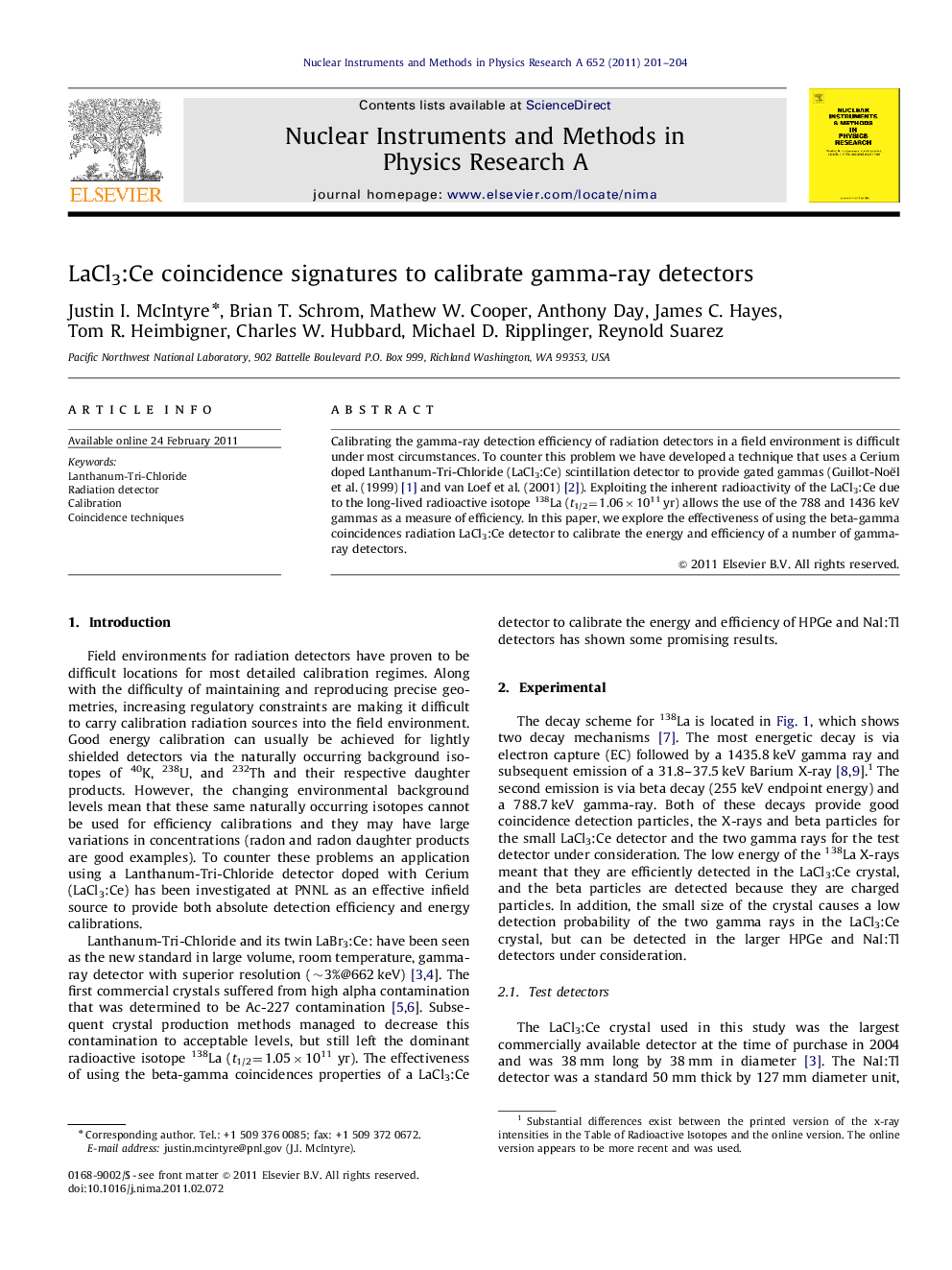| Article ID | Journal | Published Year | Pages | File Type |
|---|---|---|---|---|
| 1824648 | Nuclear Instruments and Methods in Physics Research Section A: Accelerators, Spectrometers, Detectors and Associated Equipment | 2011 | 4 Pages |
Abstract
Calibrating the gamma-ray detection efficiency of radiation detectors in a field environment is difficult under most circumstances. To counter this problem we have developed a technique that uses a Cerium doped Lanthanum-Tri-Chloride (LaCl3:Ce) scintillation detector to provide gated gammas (Guillot-Noël et al. (1999) [1] and van Loef et al. (2001) [2]). Exploiting the inherent radioactivity of the LaCl3:Ce due to the long-lived radioactive isotope 138La (t1/2=1.06×1011 yr) allows the use of the 788 and 1436 keV gammas as a measure of efficiency. In this paper, we explore the effectiveness of using the beta-gamma coincidences radiation LaCl3:Ce detector to calibrate the energy and efficiency of a number of gamma-ray detectors.
Related Topics
Physical Sciences and Engineering
Physics and Astronomy
Instrumentation
Authors
Justin I. McIntyre, Brian T. Schrom, Mathew W. Cooper, Anthony Day, James C. Hayes, Tom R. Heimbigner, Charles W. Hubbard, Michael D. Ripplinger, Reynold Suarez,
